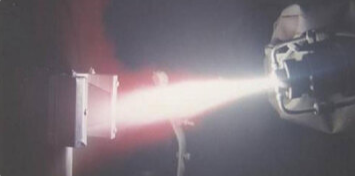

current position:Information and data>Basic characteristics of laser cladding technology
The lasers used in laser cladding mainly include CO2 lasers and solid-state lasers (mainly including disk lasers, fiber lasers and diode lasers. Old-fashioned lamp-pumped lasers have gradually faded out of the market due to low photoelectric conversion efficiency and cumbersome maintenance). For continuous CO2 laser cladding, scholars at home and abroad have done a lot of research. The research and development of high-power solid-state lasers has developed rapidly, mainly used for surface modification of non-ferrous alloys. According to literature reports, using CO2 laser for laser cladding of aluminum alloy, the aluminum alloy substrate is easily deformed or even collapsed under the condition of CO2 laser irradiation. The output wavelength of solid-state lasers, especially disc lasers, is 1.06 μm, which is an order of magnitude smaller than the wavelength of CO2 lasers, so it is more suitable for laser cladding of such metals.
Laser cladding can be divided into two categories according to the different powder feeding processes: powder preset method and synchronous powder feeding method. The two methods have similar effects. The synchronous powder feeding method has the advantages of easy automatic control, high laser energy absorption rate, and no internal pores, especially for cladding metal ceramics, which can significantly improve the crack resistance of the cladding layer, so that the hard ceramic phase can be The advantages of uniform distribution in the cladding layer, etc.
1. Laser cladding has the following characteristics:
(1) The cooling rate is fast (up to 106K/s), which belongs to the rapid solidification process, and it is easy to obtain a fine-grained structure or generate new phases that cannot be obtained in an equilibrium state, such as unstable phase, amorphous state, etc.
(2) The dilution rate of the coating is low (generally less than 5%), and it has a strong metallurgical bond or interface diffusion bond with the substrate. By adjusting the laser process parameters, a good coating with a low dilution rate can be obtained, and the coating composition and Controllable dilution;
(3) The heat input and distortion are small, especially when high power density is used for rapid cladding, the deformation can be reduced to within the assembly tolerance of the part.
(4) There are almost no restrictions on powder selection, especially for depositing high melting point alloys on the surface of low melting point metals;
(5) The thickness of the cladding layer is large, and the thickness of one coating is 0.2~2.0mm for a single powder feeding.
(6) It can carry out selective cladding, with less material consumption and excellent cost performance;
(7) Beam aiming can make inaccessible areas clad;
(8) The technological process is easy to realize automation.
It is very suitable for wear repair of common wearing parts in oil fields.
2. Similarities and differences between laser cladding and laser alloying
Laser cladding and laser alloying are both rapid melting processes produced by high-energy-density laser beams, forming alloy cladding layers with completely different compositions and properties that are fused with each other on the surface of the substrate. The two processes are similar, but there are essential differences. The main differences are as follows:
(1) In the process of laser cladding, the cladding material is completely melted, and the melting layer of the base body is very thin, so it has little influence on the composition of the cladding layer, while laser alloying is to add alloy to the surface of the substrate melting the cladding layer element, the purpose is to form a new alloy layer based on the substrate.
(2) In essence, laser cladding does not use the molten metal on the surface layer of the base as a solvent, but melts the separately configured alloy powder to make it the main alloy of the cladding layer. At the same time, a thin layer of the base alloy is also melted to form Metallurgical bonding. The preparation of new materials by laser cladding technology is an important basis for the repair and remanufacturing of failed parts under extreme conditions and the direct manufacturing of metal parts, which is highly valued by the scientific community and enterprises around the world.
Hot information

